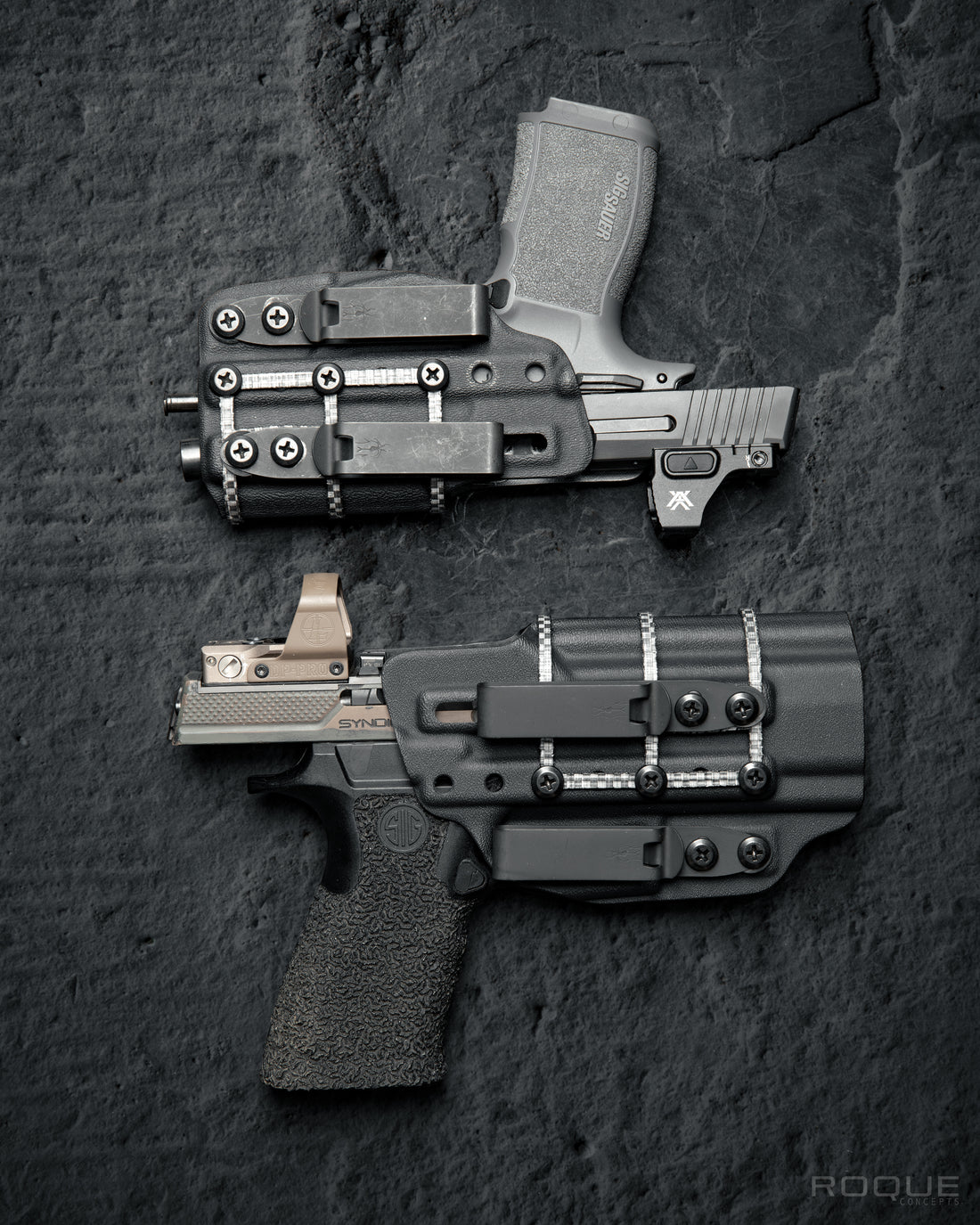Sig Sauer is a name synonymous with quality and reliability in the firearms industry. Two of its standout offerings, the Sig P320 and Sig P365, have gained immense popularity for their exceptional performance and innovative design. In this blog post, we will explore the fascinating history and evolution of these two handguns, tracing their origins, notable milestones, and their impact on the concealed carry and self-defense markets.
1. The Sig P320: Revolutionizing Modular Handguns
The Sig P320 made its debut in 2014, introducing a groundbreaking concept in handgun design: modularity. It was designed as a striker-fired, polymer-framed pistol that could be easily customized to meet the needs of individual shooters. The P320's modularity allows users to interchange grip modules, slide assemblies, and barrel lengths, making it adaptable for various purposes, from concealed carry to full-size duty applications.
2. Adoption by the U.S. Military: M17/M18
In a significant milestone, the Sig P320 platform was adopted by the U.S. military as the XM17 Modular Handgun System (MHS) in 2017. The military variants, known as the M17 (full-size) and M18 (compact), replaced the aging Beretta M9 pistols. This adoption further solidified the Sig P320's reputation for reliability, durability, and performance under demanding conditions.
3. Expansion of the P320 Family:
Sig Sauer expanded the P320 family by introducing various models and configurations to cater to different user preferences. These include compact and subcompact versions suitable for concealed carry, as well as full-size options for duty or competition use. The P320 X-Series, with enhanced features such as improved triggers, slide cuts, and optics-ready slides, gained popularity among competitive shooters.
4. The Sig P365: Redefining Concealed Carry
In 2018, Sig Sauer launched the Sig P365, a game-changer in the world of concealed carry handguns. The P365 set new standards for capacity by offering a double-stack, micro-compact design with a staggering 10+1 or 12+1 round capacity. Despite its small size, the P365 maintained Sig Sauer's commitment to reliability, accuracy, and shootability.
5. Innovation in Size and Capacity:
The Sig P365's compact size and high-capacity magazine brought a new level of firepower to the concealed carry market. Its slim profile, ergonomic grip, and excellent trigger contributed to its widespread popularity among those seeking a reliable and easily concealable firearm. Sig Sauer later introduced variants like the P365 XL, featuring a longer slide and barrel for improved accuracy and sight radius.
6. Evolving Features and Enhancements:
Both the Sig P320 and P365 have seen continual improvements and refinements since their initial releases. Sig Sauer has responded to user feedback and introduced upgraded features, including optics-ready slides, improved triggers, and enhanced ergonomics. These enhancements have further solidified their reputation for exceptional performance and user satisfaction.
7. Continued Innovation:
Sig Sauer continues to innovate and expand its offerings based on the P320 and P365 platforms. This includes introducing models with optics-ready slides, threaded barrels for suppressor use, and enhanced grip options. Sig Sauer's commitment to continuous improvement ensures that these handguns remain at the forefront of innovation and functionality.
The Sig P320 and Sig P365 have revolutionized the handgun market with their innovative designs, modularity, and exceptional performance. The P320's adaptability and its adoption by the U.S. military, along with the P365's game-changing capacity in a micro-compact package, have solidified Sig Sauer's position as a leader in the concealed carry and self-defense realms. The evolution of these handguns showcases Sig Sauer's commitment to meeting the evolving needs of shooters and their relentless pursuit of excellence in firearm design and manufacturing.

